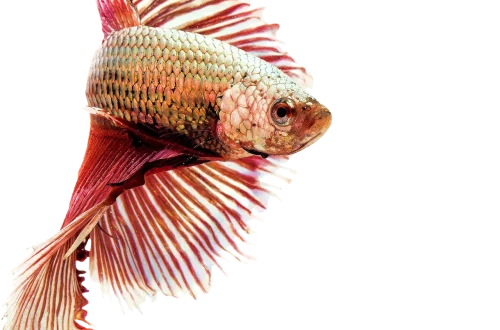
Essential Guide to Choosing the Best Bird Seed Food for Your Feeder
Birdwatching is a cherished activity for many nature enthusiasts, providing a serene connection to the outdoors and an opportunity to observe the vibrant lives of our avian friends. One of the best ways to attract birds to your garden or backyard is by setting up a bird feeder. However, the key to a successful bird feeding experience lies in choosing the right type of birdseed. With a plethora of options available, it can be overwhelming to determine which seed varieties will not only entice birds but also promote their health and well-being.
The right birdseed can make a significant difference in the types of birds that visit your feeder, influencing their feeding habits and overall health. Different species have distinct preferences, and understanding these can enhance your birdwatching experience. Furthermore, the quality of the birdseed matters. Fresh, high-quality seeds are more nutritious and appealing to birds than stale or inferior options.
Whether you’re a seasoned birdwatcher or just starting, knowing how to choose the best birdseed is essential. The following sections will guide you through the important considerations when selecting birdseed, ensuring that your feeder becomes a popular dining spot for local birds.
Understanding Different Types of Birdseed
When it comes to birdseed, there’s a wide variety of options, each catering to different species of birds. Understanding these types can help you make informed choices that attract specific birds to your feeder.
Sunflower seeds are among the most popular choices for bird feeders. They are rich in fat and protein, making them an excellent source of energy for birds. The two main types are black oil sunflower seeds and striped sunflower seeds. Black oil sunflower seeds have thinner shells and higher oil content, making them easier for smaller birds to consume. Striped sunflower seeds, on the other hand, have thicker shells and are favored by larger birds like cardinals and blue jays.
Nyjer seed, also known as thistle seed, is another favorite among small birds, particularly goldfinches. This tiny seed is high in oil and provides essential nutrients, making it a desirable food source during breeding and migration seasons. Nyjer seeds are best offered in specialized feeders with small holes to prevent the tiny seeds from spilling out.
Safflower seeds are another excellent option, appealing particularly to cardinals and other clinging birds. These seeds are less attractive to undesirable visitors such as squirrels and grackles, making them a great choice if you’re looking to attract specific birds while minimizing competition.
Another important type of birdseed is millet, which is often found in mixed seed blends. While larger birds may overlook millet, it is a staple for many smaller birds like juncos and sparrows. When selecting birdseed, it’s also worth considering seed blends, which usually contain a mix of various seeds, appealing to a broader range of bird species.
Ultimately, understanding the different types of birdseed and their appeal to various bird species is crucial for attracting the birds you want to your feeder. By selecting the right seeds, you can create a vibrant and diverse birdwatching environment in your backyard.
Factors to Consider When Choosing Birdseed
Choosing the right birdseed involves several considerations that go beyond simply selecting a popular brand. Several factors can influence the effectiveness of your bird feeding efforts, ensuring that you attract a variety of birds while maintaining their health and well-being.
One of the primary considerations is the freshness of the seeds. Stale or old seeds can lose their nutritional value and appeal, discouraging birds from visiting your feeder. Always check the packaging date and opt for seeds that are labeled as fresh. Buying from reputable suppliers or local bird stores can often guarantee quality and freshness.
Another important factor is the bird species you wish to attract. Different birds have varying dietary preferences, so it’s essential to research which seeds are best suited for the species in your area. For instance, if you want to attract finches, Nyjer seeds are ideal, whereas if you’re hoping to entice woodpeckers, suet or peanut pieces might be more appropriate.
Additionally, consider the feeder type you have. Some feeders are designed for specific seeds, such as tube feeders for Nyjer seeds or platform feeders for seed mixes. Ensure that your feeder complements the type of seed you choose to maximize its effectiveness.
The location of your feeder also plays a significant role in attracting birds. Placing feeders in quiet, sheltered areas helps provide a sense of safety for visiting birds. Additionally, consider positioning your feeder near natural food sources or trees, which can provide essential cover and perching spots.
Lastly, be mindful of the potential for attracting unwanted guests, such as squirrels or larger birds. If you’re concerned about these pests, consider using squirrel-proof feeders or opting for seeds that are less appealing to them, such as safflower seeds.
By taking these factors into account when choosing birdseed, you can create a welcoming environment for your feathered friends while ensuring that their dietary needs are met.
Maintaining Your Bird Feeder and Seed Quality
Once you’ve selected the perfect birdseed for your feeder, it’s crucial to maintain both the feeder and the quality of the seeds to ensure a healthy feeding station for birds.
Regular cleaning of your bird feeder is essential. Over time, feeders can accumulate mold, bacteria, and leftover seeds that can be harmful to birds. Aim to clean your feeder at least every two weeks, or more frequently during wet or humid conditions. Use hot, soapy water to scrub the feeder thoroughly, and rinse it well to remove any soap residue. Allow the feeder to dry completely before refilling it with fresh birdseed.
In addition to cleaning the feeder, monitor the seed quality regularly. If you notice any seeds that are discolored, moldy, or have a rancid smell, it’s time to discard them. Keeping an eye out for signs of spoilage will help ensure that the birds visiting your feeder are getting the best nutrition possible.
Consider the storage of your birdseed as well. It’s best to keep birdseed in a cool, dry place, away from direct sunlight. Using airtight containers can help preserve freshness and prevent pests from getting into the seeds. If you buy birdseed in bulk, ensure that you’re using it up within a reasonable timeframe to avoid spoilage.
Finally, be attentive to the types of birds visiting your feeder. If you notice a decrease in bird activity, it may be a sign that the seed is no longer appealing or that there are other factors at play, such as changes in the local bird population. Adjusting your birdseed selection based on these observations can help maintain a lively feeding environment.
By committing to regular maintenance and monitoring the quality of both your birdseed and feeder, you can create a thriving dining spot for birds, enhancing your enjoyment of this peaceful hobby.
Conclusion: Creating a Bird-Friendly Environment
Choosing the best birdseed for your feeder is just one aspect of creating an inviting environment for birds. A combination of the right food, regular maintenance, and an understanding of local bird preferences can lead to a rewarding birdwatching experience.
By investing time in learning about different seeds and their nutritional value, you can cater to the specific needs of the birds in your area. Additionally, maintaining a clean and safe feeder will encourage birds to return consistently, providing you with countless hours of enjoyment.
Furthermore, consider incorporating natural elements into your yard, such as native plants, water sources, and perches. These additions can further attract birds and create a habitat that supports their well-being.
Birdwatching is not just about providing food; it’s about fostering a connection with nature and promoting biodiversity in your local ecosystem. With careful consideration and a bit of effort, you can create a thriving bird-friendly environment that enriches both your life and the lives of the birds you cherish.
This article is intended for informational purposes only and does not constitute medical advice. Always consult a healthcare professional for any health-related concerns.




